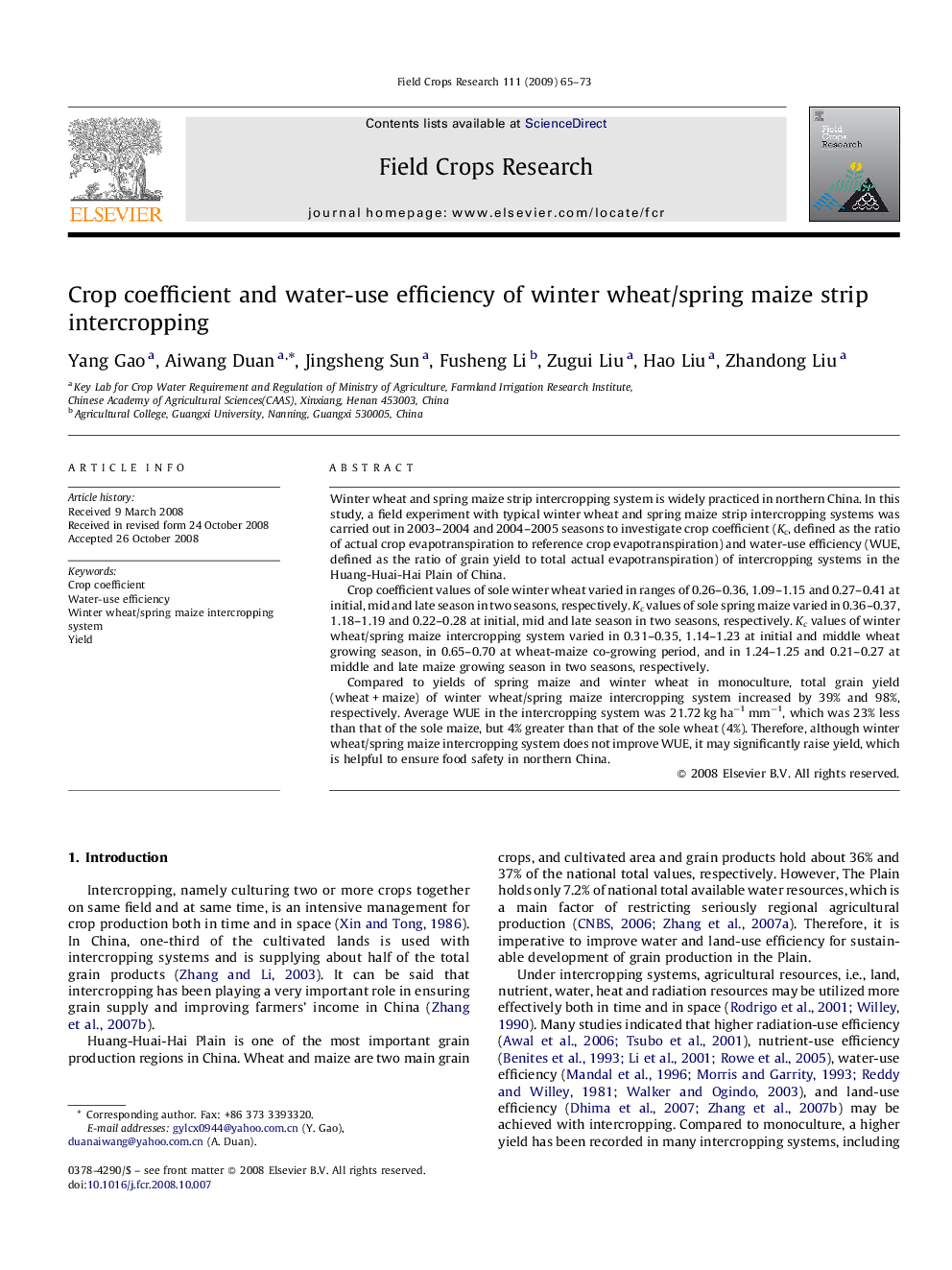| Article ID | Journal | Published Year | Pages | File Type |
|---|---|---|---|---|
| 4511302 | Field Crops Research | 2009 | 9 Pages |
Winter wheat and spring maize strip intercropping system is widely practiced in northern China. In this study, a field experiment with typical winter wheat and spring maize strip intercropping systems was carried out in 2003–2004 and 2004–2005 seasons to investigate crop coefficient (Kc, defined as the ratio of actual crop evapotranspiration to reference crop evapotranspiration) and water-use efficiency (WUE, defined as the ratio of grain yield to total actual evapotranspiration) of intercropping systems in the Huang-Huai-Hai Plain of China.Crop coefficient values of sole winter wheat varied in ranges of 0.26–0.36, 1.09–1.15 and 0.27–0.41 at initial, mid and late season in two seasons, respectively. Kc values of sole spring maize varied in 0.36–0.37, 1.18–1.19 and 0.22–0.28 at initial, mid and late season in two seasons, respectively. Kc values of winter wheat/spring maize intercropping system varied in 0.31–0.35, 1.14–1.23 at initial and middle wheat growing season, in 0.65–0.70 at wheat-maize co-growing period, and in 1.24–1.25 and 0.21–0.27 at middle and late maize growing season in two seasons, respectively.Compared to yields of spring maize and winter wheat in monoculture, total grain yield (wheat + maize) of winter wheat/spring maize intercropping system increased by 39% and 98%, respectively. Average WUE in the intercropping system was 21.72 kg ha−1 mm−1, which was 23% less than that of the sole maize, but 4% greater than that of the sole wheat (4%). Therefore, although winter wheat/spring maize intercropping system does not improve WUE, it may significantly raise yield, which is helpful to ensure food safety in northern China.
